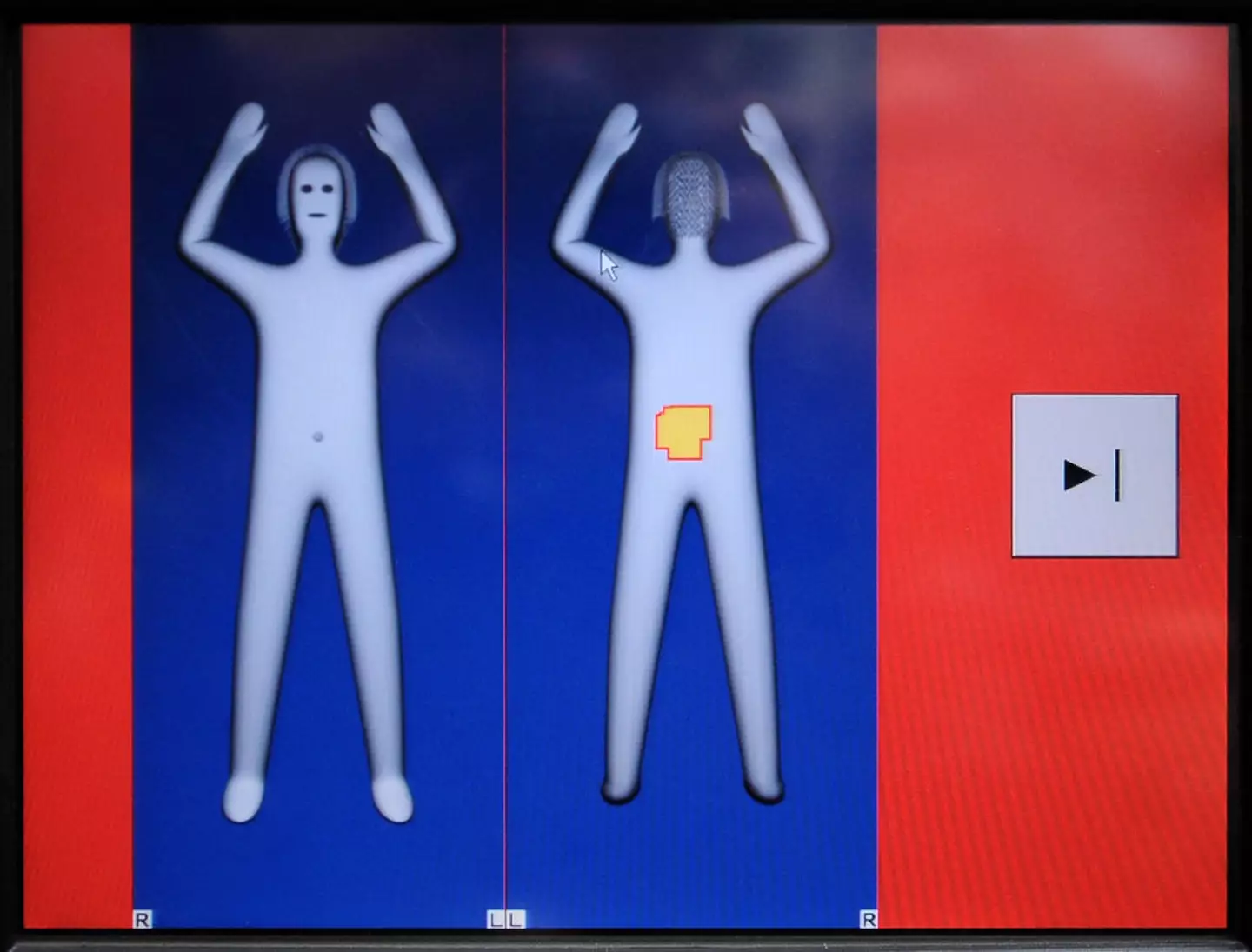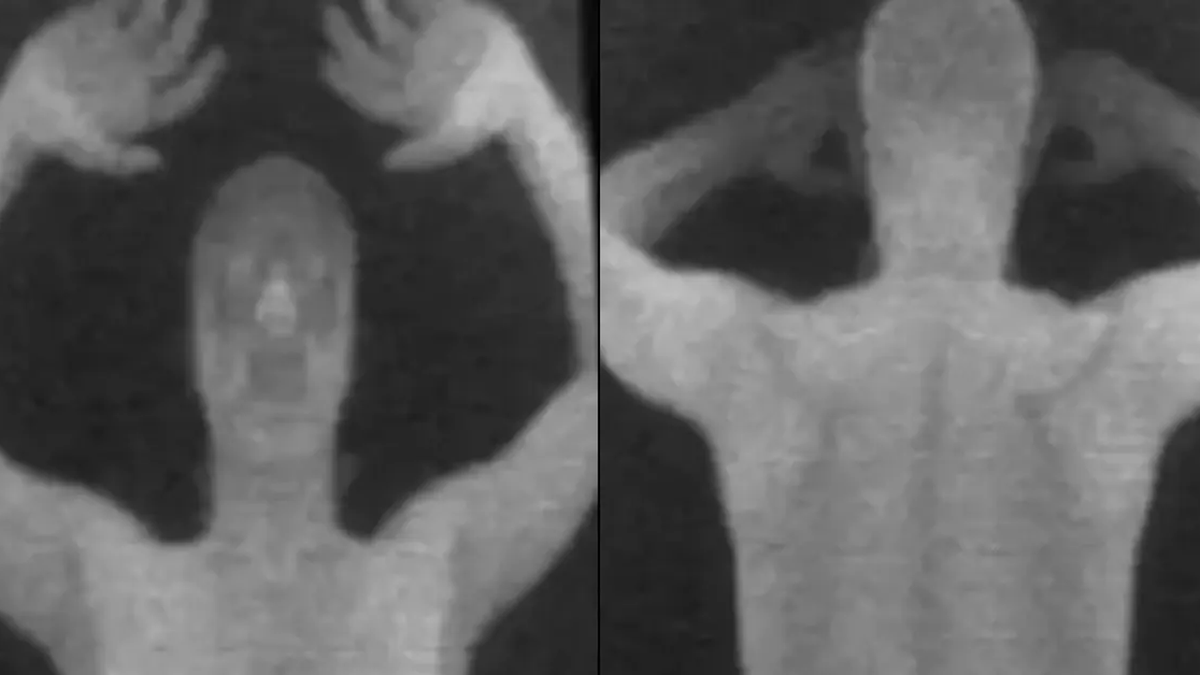Getting through airport security has always been a chore – from unpacking your life into a plastic tray to enduring the awkward shuffle through body scanners. But what’s left people genuinely stunned is the revelation of what those scanners used to show.
Back in the early 2010s, the now-infamous Rapiscan X-ray scanners were rolled out in airports, creating a wave of controversy.
Initially introduced by the Transportation Security Administration (TSA) in the US following the 2009 Christmas Day bombing attempt, these machines offered an unprecedented level of detail.
And by ‘detail’ we mean a full, uncensored body scan that left nothing to the imagination. Take a look:
The scanners were brought in after Umar Farouk Abdulmutallab attempted to detonate explosives hidden in his underwear during a flight from Amsterdam to Detroit. Thanks to quick-thinking passengers, disaster was averted. But the incident prompted the TSA to install 174 scanners in 30 airports across the US at a cost of $180,000 per machine.
In the UK, similar scanners were implemented at major airports in 2013, sparking outrage and earning the nickname ‘virtual strip searches’.
Critics were quick to slam the intrusive nature of the images, which showed everything from body shape to, well, personal anatomy. Social media exploded as shocked flyers shared their disbelief.
One commenter at the time quipped, “I’ll just drive everywhere, thanks.” Another labeled the scanners as ‘security theatre’, while someone joked: “This is airport security, not OnlyFans.”
The scanners caused backlash (X /@greendaylover44)
The backlash reached tipping point in 2013 when the TSA was forced to remove the machines due to their inability to meet privacy standards. Specifically, the scanners couldn’t integrate Automated Target Recognition (ATR) software, which would have created generic, less intrusive outlines instead of detailed body images.
As a result, they were replaced with millimeter wave scanners that are still in use today.
Unlike their predecessors, the new scanners don’t reveal a passenger’s unique body image, instead relying on non-intrusive, generic outlines to flag potential threats. Shawna Malvini Redden, a researcher and author of 101 Pat-Down’s explained to Reader’s Digest: “Early versions of the scanners came out without any privacy protections. Now, machines generate generic images instead of the passenger’s unique image.”

They’re less, erm, detailed now (ALBERTO PIZZOLI/AFP via Getty Images)
For many travellers who missed this moment in airport history, discovering what the old scanners showed has been a shock.
“I thought X-ray meant you could only see bones,” tweeted one stunned user.
Another joked: “Guess I’ll be tucking my junk text time, just in case.”
While the newer systems are less invasive, airport security is still far from a stress-free experience. But hey, at least you don’t have to worry about your TSA scan turning into an impromptu anatomy lesson.

